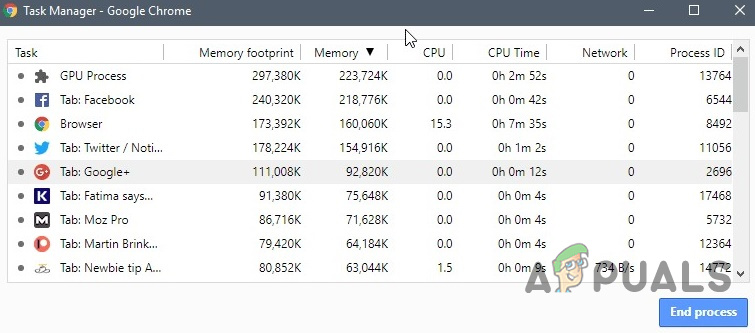But that said, a web browser so powerful and useful, needs a lot of system resources and processes, so, a task manager was needed to view and control any running processes. When newer versions of the Chrome browser were built, the ability to create a new process for every open window, open tab and extension were given to it. This architecture is very helpful as the crashing of one tab or extension would not affect the other processes. If an extension or tab malfunctions or fails to work, you can disable it using an integrated Chrome Task Manager. But why use Chrome task manager, not Windows Task Manager or Mac Activity Monitor? When we use Windows Task Manager or Mac Activity monitor to view and manage each chrome process or website, we will see many google chrome Helpers, not each web link page. So, we don’t know which page uses a lot of computer memory. Moreover, it was revealed recently that Chrome users can use Chrome Task Manager to discover Crypto-Miners that run on websites or in extensions
How to Use Chrome Task Manager
However occasionally, you may notice Chrome lagging or acting strangely, and you don’t know which tab or extension is the culprit. Or a webpage may freeze and you want to use Chrome Task Manager to end its process.
Step 1: Launch the Chrome Task Manager
Step 2: Understand Task Manager Interface
All open sites, loaded extensions, and internal Chrome processes such as the browser or GPU process will be shown in the task manager. Memory Use and Footprint, CPU and Network use, and the Process ID are displayed by default in Chrome’s Task Manager. Icons appear next to each Task in the Chrome Task Manager window. A Regular Chrome Icon represents the task that manages all of Chrome’s windows and tabs. Close this task if you want to stop all browser processes. Other icons represent processes such as Renderers, Plug-Ins, Extensions, and Graphical Processing Unit. Process Types can be identified by looking for keywords in the Task column e.g. to locate the “Tab” process look for the word “Tab” in the column of Task. You can add more than over 20 Categories of Stats as new columns.
Step 3: End Troublesome Processes
Any of The Processes could be ended from this menu which is helpful when an extension or tab is problematic.
How to Use the in-built Spell Check Tool on Google ChromeHow To Setup Any Web Project Using Pre-Built TemplatesHow To Control The Fan Speeds Of Your Newly Built Gaming PCBest PRE-BUILT Gaming PCs To Buy In 2022








